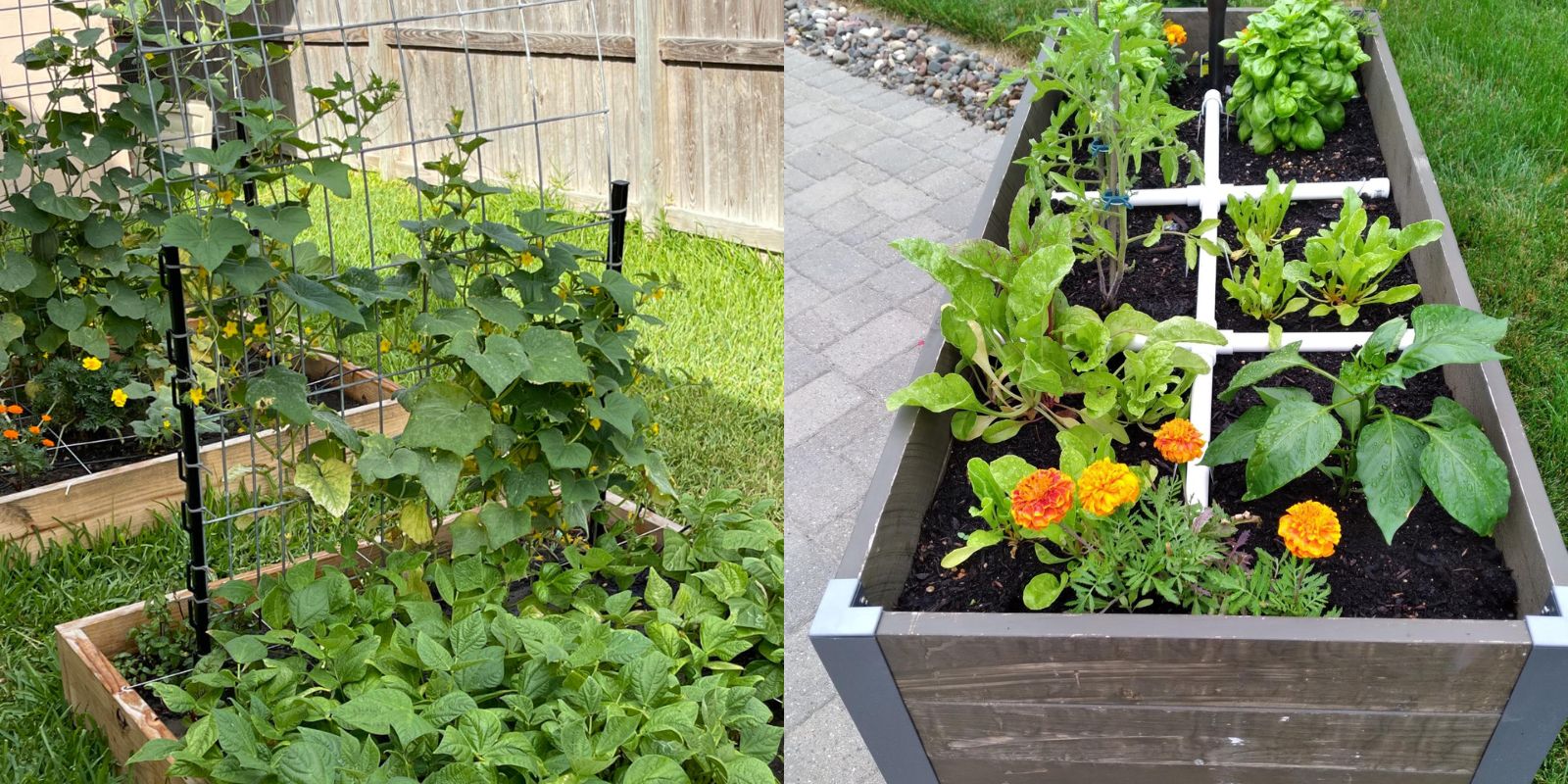Introduction
If you’re looking to maximize your gardening potential in a small area, the square foot garden method is a game-changer. Developed by Mel Bartholomew, this technique is designed to help gardeners make the most out of limited space, ensuring a high yield with minimal effort. Whether you have a tiny backyard, a patio, or just a small plot of land, a square foot garden allows you to grow a variety of plants efficiently. In this comprehensive guide, we’ll walk you through the process of building and maintaining your own square foot garden, from planning and construction to planting and harvesting.
1. Understanding the Square Foot Garden Concept
The square foot garden method divides your planting area into small, manageable squares, typically one foot by one foot. Each square is dedicated to a specific type of plant, allowing you to grow more in a compact space. This method optimizes space usage, reduces weed growth, and makes it easier to manage and maintain your garden.
2. Selecting the Ideal Location
Choosing the right location is crucial for the success of your square foot garden. Here are key considerations:
- Sunlight: Ensure your garden area receives at least 6-8 hours of direct sunlight each day. Most vegetables and flowers require full sun to thrive.
- Accessibility: Place your garden where you can easily access it for watering, weeding, and harvesting.
- Drainage: Good drainage is essential. Avoid areas where water tends to pool.
3. Building the Frame
The frame is the backbone of your square foot garden. Here’s how to build it:
- Materials: Use untreated lumber or composite materials to construct the frame. Avoid treated wood, as it can leach harmful chemicals into the soil.
- Dimensions: A typical square foot garden frame measures 4×4 feet or 4×8 feet, but you can adjust the size based on your space and needs.
- Construction: Assemble the frame using screws or nails, ensuring it is square and level. If you’re placing the garden directly on the ground, you may want to add a weed barrier under the frame.
4. Preparing the Soil Mix
The success of your garden largely depends on the quality of your soil. The ideal soil mix for a square foot garden is a combination of:
- Compost: Provides essential nutrients and improves soil structure.
- Peat Moss: Helps retain moisture and improves soil texture.
- Vermiculite or Perlite: Enhances aeration and drainage.
Mix these components in equal parts to create a well-balanced, nutrient-rich soil that supports healthy plant growth.
5. Marking the Grid
To maximize space and manage your planting effectively, divide the planting area into 1-foot squares:
- Grid Lines: Use string, wooden slats, or plastic grid material to mark the squares. Secure the lines or slats to the frame.
- Labeling: Optionally, you can label each square with the plant type and spacing requirements.
6. Planting Your Seeds or Seedlings
With your garden grid in place, it’s time to plant:
- Spacing: Follow the recommended spacing guidelines for each type of plant. For example, radishes may need just one square, while tomatoes require more space.
- Planting Depth: Plant seeds or seedlings at the recommended depth, and ensure they have enough room to grow.
- Companion Planting: Consider companion planting to optimize space and improve plant health. For example, planting marigolds alongside vegetables can help deter pests.
7. Watering and Maintenance
Proper care is crucial for a thriving garden:
- Watering: Keep the soil consistently moist, but not waterlogged. Water early in the day to minimize evaporation and prevent disease.
- Weeding: Regularly check for weeds and remove them to prevent competition for nutrients and space.
- Mulching: Apply mulch around plants to retain moisture, reduce weeds, and regulate soil temperature.
8. Harvesting and Crop Rotation
As your plants grow and mature, it’s time to enjoy the fruits of your labor:
- Harvesting: Pick fruits, vegetables, and herbs when they reach maturity. Regular harvesting encourages continued production.
- Crop Rotation: Rotate crops annually to maintain soil health and reduce the risk of pests and diseases. Avoid planting the same type of plant in the same square year after year.
9. Troubleshooting Common Issues
Even with careful planning, you may encounter some challenges:
- Pests: Use natural pest control methods, such as neem oil or insecticidal soap, to address pest issues.
- Diseases: Practice good garden hygiene, and remove affected plants to prevent the spread of disease.
- Soil Quality: Regularly add compost to maintain soil fertility and structure.
10. Expanding Your Square Foot Garden
Once you’ve mastered the basics, consider expanding your garden:
- Additional Frames: Add more frames to increase your growing area.
- Vertical Gardening: Utilize vertical space by adding trellises or plant towers for climbing plants.
- Seasonal Planning: Plan for different seasons by growing cool-season crops in the spring and summer crops in the warmer months.
Conclusion
Building a square foot garden is a rewarding way to maximize your gardening space and enjoy a bountiful harvest. By following the steps outlined in this guide, you can create an efficient and productive garden that suits your needs. Whether you’re a seasoned gardener or a beginner, the square foot garden method offers a straightforward approach to growing a variety of plants in a compact area. Start your square foot garden today and experience the joy of cultivating fresh, homegrown produce and beautiful blooms in your own backyard.
Motivation: Ready to transform your gardening experience and make the most of your space? Start building your square foot garden today and watch your gardening dreams take root! 🌿🌻 #SquareFootGardening #UrbanFarming #GardenEfficiency

